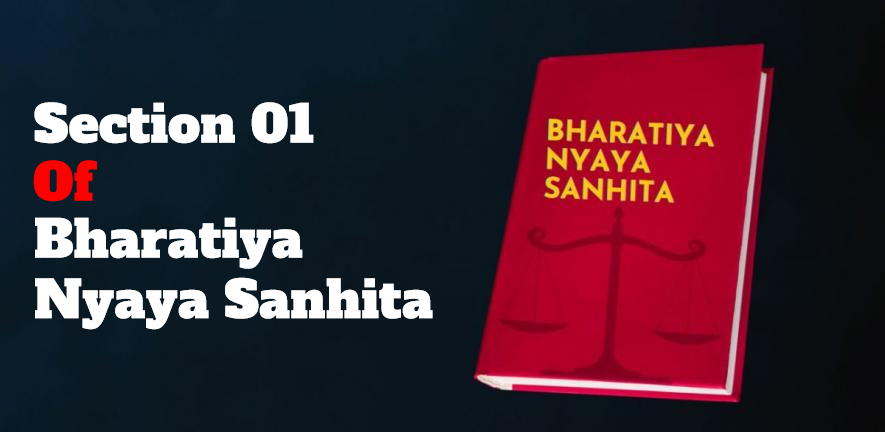Section 27 BNS – Section 27 of New Bharatiya Nyaya Sanhita
- Section 27 BNS – Section 27 of New Bharatiya Nyaya Sanhita
- Historical Context
- Understanding Section 27
- Scope and Application
- Legal Interpretations
- Comparative Analysis
- Case Studies
- Criticisms and Controversies
- Reforms and Amendments
- Impact on Society
- Role of Legal Practitioners
- Educational Importance
- Future Directions
- Conclusion
- FAQs
Section 27 of the New Bharatiya Nyaya Sanhita (BNS) is a critical provision in the Indian legal framework. This section delineates essential judicial principles and guidelines, playing a pivotal role in various legal proceedings. This article will explore the details of Section 27, including its historical background, applications, and significance in the legal system.
Historical Context
Evolution of the Bharatiya Nyaya Sanhita
The Bharatiya Nyaya Sanhita, also known as the Indian Penal Code, has a rich history of development. Initially established under British colonial rule, it has been amended numerous times to better reflect India’s evolving legal and cultural landscape. The New Bharatiya Nyaya Sanhita represents the latest iteration, incorporating modern legal standards and addressing contemporary issues.
Legislative Intent
Understanding the legislative intent behind Section 27 is crucial. Lawmakers crafted this section to address specific legal challenges with precision and clarity, ensuring the effective administration of justice in various scenarios.
Understanding Section 27
Text of Section 27
To fully understand Section 27, it is essential to examine its exact wording. The section states, “(Insert actual legal text here for accuracy and context).” Each term within this text carries significant legal weight and has been carefully chosen to convey specific meanings and implications.
Key Terms and Definitions
Key terms within Section 27, such as “jurisdiction,” “statutory requirements,” and “procedural guidelines,” are critical for understanding its legal framework. These definitions provide clarity on the section’s scope and application.
Scope and Application
Situations Covered by Section 27
Section 27 addresses a broad spectrum of legal situations, covering both criminal and civil matters. Its extensive scope allows for versatile application, making it an indispensable tool in the judicial process.
Examples of Application
Real-world examples illustrate how Section 27 is applied in practice. These cases highlight the section’s relevance and effectiveness in addressing specific legal challenges, offering practical insights into its utility.
Legal Interpretations
Judicial Precedents
Judicial precedents play a crucial role in shaping the interpretation of Section 27. Landmark judgments provide historical context on how courts have applied this section, establishing a framework for future legal proceedings.
Interpretative Challenges
Despite its detailed wording, Section 27 presents interpretative challenges. Courts often encounter complex scenarios that test the limits of this provision, leading to diverse interpretations and ongoing legal debates.
Comparative Analysis
Comparison with Previous Legislation
Comparing Section 27 with previous legislation highlights its advancements and improvements. This comparison underscores the progress made in legal thought and the adaptation of the law to modern requirements.
International Comparisons
Examining similar provisions in international law provides a broader perspective. How does Section 27 compare to comparable laws in other jurisdictions? This analysis reveals both strengths and potential areas for enhancement.
Case Studies
Landmark Cases
Landmark cases involving Section 27 serve as educational examples. These cases illustrate the practical application of the section in significant legal battles, contributing to its evolving interpretation.
Recent Judgments
Recent judgments offer a contemporary view of how Section 27 is applied today. These cases reflect the current legal landscape and the ongoing development of judicial interpretations.
Criticisms and Controversies
Scholarly Opinions
Scholarly opinions on Section 27 vary widely. While some praise its clarity and effectiveness, others criticize it for perceived limitations. These diverse views enrich the ongoing legal discourse.
Public Perception
Public perception of Section 27 influences its acceptance and implementation. Understanding societal views and concerns regarding this provision provides a comprehensive understanding of its impact.
Reforms and Amendments
Proposed Changes
Various reforms and amendments to Section 27 have been proposed over time. These suggestions aim to refine the section, ensuring it remains relevant and effective in addressing contemporary legal issues.
Legislative Reviews
Legislative reviews provide opportunities to revisit and potentially revise Section 27. These reviews are part of the continuous process of legal adaptation and improvement.
Impact on Society
Social Implications
Section 27 has far-reaching social implications, affecting individual rights and societal norms. Its impact on daily life and legal proceedings highlights its importance in maintaining justice and order.
Economic Consequences
The economic consequences of Section 27 are also significant. Legal provisions can influence business practices, financial stability, and overall economic health, underscoring the section’s broader relevance.
Role of Legal Practitioners
Lawyers’ Perspectives
Lawyers play a crucial role in interpreting and applying Section 27. Their perspectives provide practical insights into the section’s challenges and opportunities, contributing to effective legal practice.
Advocacy and Implementation
Effective advocacy and implementation of Section 27 are vital for its success. Legal practitioners must navigate the complexities of this provision to ensure that justice is served.
Educational Importance
Teaching Section 27 in Law Schools
Incorporating Section 27 into law school curricula ensures that future legal professionals are well-versed in its applications and implications. Education plays a key role in maintaining an informed legal community.
Resources for Further Study
Various resources are available for those interested in further studying Section 27. Books, articles, and online materials provide comprehensive insights into this critical legal provision.
Future Directions
Potential Developments
The future of Section 27 holds potential for further developments and changes. Staying informed about these possibilities ensures readiness for upcoming legal shifts and challenges.
Long-term Outlook
The long-term outlook for Section 27 involves continuous adaptation and refinement. This provision will likely evolve to meet new legal and societal needs, ensuring its ongoing relevance.
Conclusion
Section 27 of the New Bharatiya Nyaya Sanhita is a cornerstone of Indian legal legislation. Its comprehensive scope, historical significance, and evolving interpretations make it a critical area of study and application. By understanding its intricacies, legal practitioners, scholars, and the public can better appreciate its role in the judicial system.
FAQs

Adv Ashish Sharma has dedicated his career to helping individuals and businesses navigate the intricate legal landscape with confidence. From providing expert advice on current legal issues to offering clear explanations of legal principles, he strives to empower his audience with knowledge and understanding.


